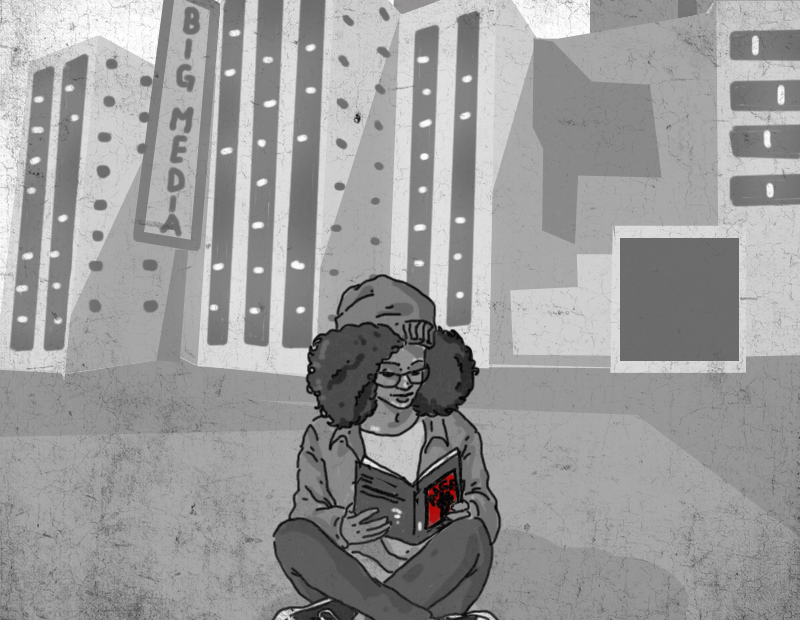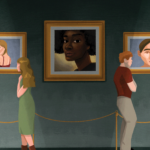Niche zines are liberating marginalized voices and setting their own standards for authentic storytelling

As community-focused storytelling becomes increasingly rare, zines offer readers connection and truth to niche subjects. While mainstream media often prioritizes clicks over community, zines like Rage, What Is to Be Done, and A Black Mage Manifesto: Free Game are carving out spaces where liberation movements can thrive and under-represented voices can flourish.
Rage, a Toronto-based media collective, is focused on amplifying the voices of 2SLGBTQIA+ individuals, Black, Indigenous, and people of colour (BIPOC). Rage operates without a hierarchical structure, allowing contributors the freedom to tell stories or share art that challenges systemic injustices of human equality.
“It started out as a platform to share the work of BIPOC artists and create a space exclusively for them, but from a left-leaning radical perspective,” says Wambui Waiganjo, one of Rage’s editors. “Many of the submissions are from people we know from day to day. Major outlets have a disconnect to the community because they have to search for stories, whereas we’re already immersed in it.”
Rage’s approach is driven by raw, unfiltered storytelling. Waiganjo says mainstream outlets often sanitize stories to make them more palatable for a wider audience. “One of our submissions talked about the very difficult experience of being in the closet and being trans,” she says. “It was such a powerful story, and I feel major publications would have to filter that or ensure it applies to as many people as possible.”
Rage embraces personal stories and believes mainstream outlets should lead with curiosity and fearlessness. “Reaching out to these communities and looking into who can lead those stories makes it possible for people to connect,” says Waiganjo.
Connecting with Communities
While zines like Rage thrive on their community-driven approach, major media outlets often struggle to bridge the gap between national focus and local storytelling. Khushy Vashisht, a former content editor at The Globe and Mail, highlights the challenges large outlets face in connecting with local communities. “Most of the stories we worked on focused on large stories coming out of Ontario, Alberta, and international news,” she says.
Vashisht notes that stories about specific communities—like a piece from summer staffer Moira Wyton about the return of British Columbia’s remote community newspaper or Sierra Bein’s story about Indo-Caribbean girls creating Carnival-inspired Barbie dolls—are rare. “Big media outlets are not the best in searching for localized stories,” Vashisht says. “Larger outlets tend to focus on larger-scale stories, so they can’t prioritize the small ones as well.”

Abdu Aljahma, a Toronto writer and the creator of What Is to Be Done, underscores the impact of niche publications driving meaningful change. Released in early 2024, the zine delves into the intersection of Black art and political movements, stating that all art is political. The zine focuses on Black poetry and Black cinema as vehicles for liberation.
Aljahma’s commitment to accessibility shaped the zine’s first issue, which he distributed for free, recognizing the financial barriers within communities—especially since magazines today often cost $30 or more. “I wanted anyone curious to engage with it so it could be accessible to people in the community,” says Aljahma. He continues supporting local Black art exhibits, screenings, workshops, and other cultural presentations, staying connected to the community that inspires his work.
Revolutionary Language
Dedication to community and authenticity is essential, especially as revolutionary language risks being commodified by mainstream news. “Revolutionary language debased from the context of its creation is empty and renders the words we say in protest, on this land, empty as well,” Montreal-based artist and writer B33P warns in their new zine, A Black Mage Manifesto: Free Game.
The zine talks about the danger of reducing revolutionary language to performative gestures, removing the historical and material contexts that give the words power. For zines like Rage and What Is to Be Done, preserving the integrity of this language is important to their work.
While much of the media is shaped by corporate conglomerates, niche zines are essential platforms for marginalized voices, amplifying the struggles of and fostering connections within their communities. As more readers seek out independent publications, one thing becomes clear: zines are not just filling a gap in the media but setting a new standard for what it means to tell the truth.
About the author
Angel is a fashion stylist in her final year of her Bachelor of Journalism, focusing on arts, fashion and culture. She’s launched the first issue of WDYM WHACK, a fashion magazine that aims to show fashion in cities worldwide. Driven by the desire to bring the stories of the Black diaspora to the forefront of fashion and journalism, her writing has been featured in T-Dot, CanCulture, FORM and more. When she’s not writing or playing with clothes, you can find her dreaming big, with a bag of Kinder Buenos by her side.






